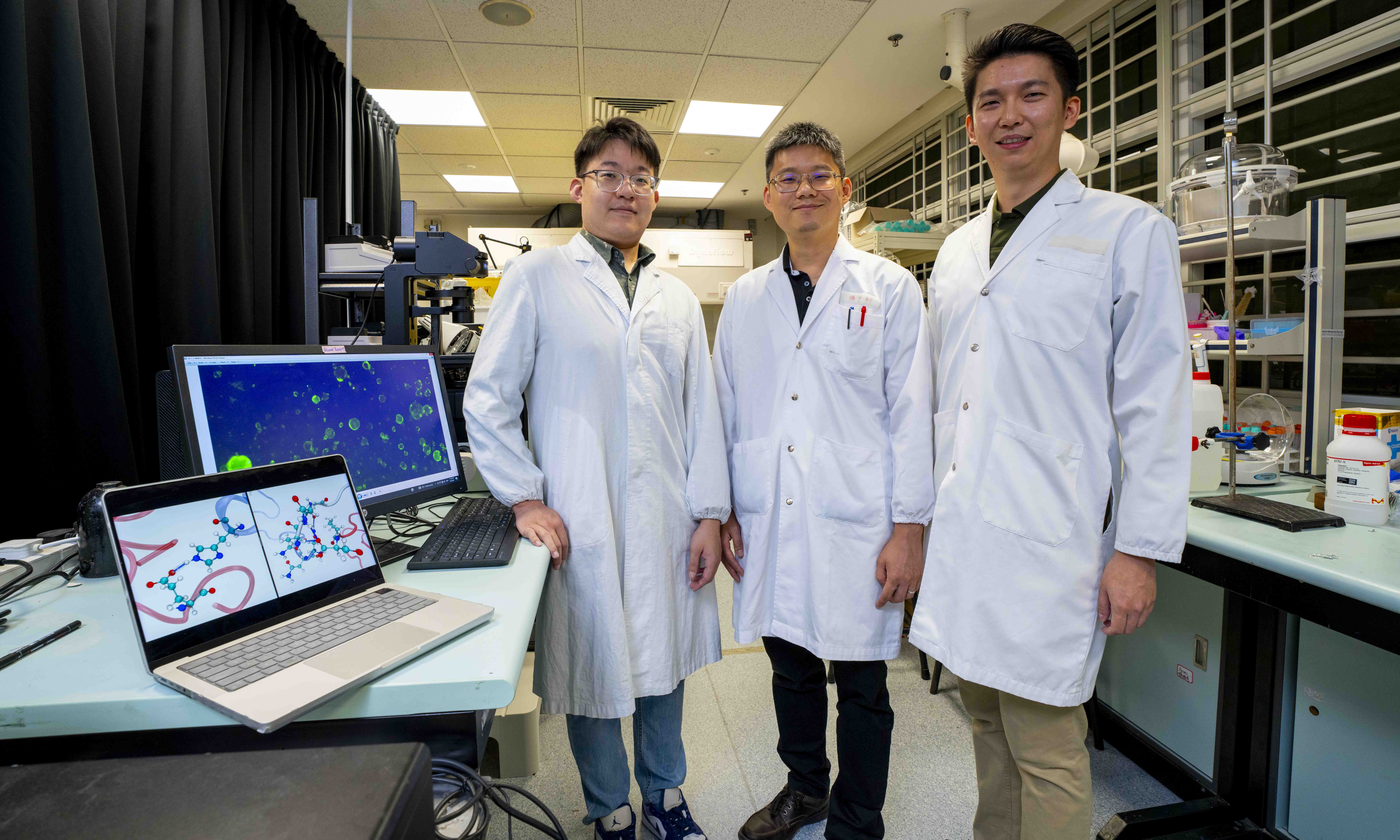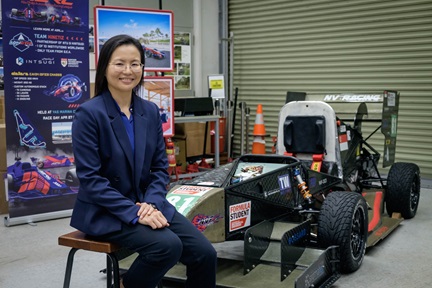Learning from caterpillars to create self-assembling capsules for drug delivery
NTU scientists develop versatile drug delivery system inspired by self-assembling proteins from caterpillars.

The NTU scientists who orchestrated the innovation. From left: Dr Li Haopeng, research fellow from NTU’s School of Materials Science and Engineering; Assoc Prof Yu Jing of NTU’s School of Materials Science and Engineering and Dr Qian Xuliang, research fellow from NTU’s School of Mechanical and Aerospace Engineering. Credit: NTU Singapore.
Self-assembling molecules that spontaneously organise themselves to form complex structures are common in nature. For example, the tough outer layer of insects, called the cuticle, is rich in proteins that can self-assemble.
Self-assembly is a cost-effective, environmentally sustainable and quick way of manufacturing nanostructures with critical applications in various industries, ranging from therapeutics to self-replicating machines.
Harnessing the self-assembling abilities of proteins from the cuticles of Asian corn borer moth caterpillars (Ostrinia furnacalis), Nanyang Technological University, Singapore (NTU Singapore) scientists have created nanosized capsules that could be used to deliver drugs and messenger RNA (mRNA). mRNA is a molecule that instructs cells to produce proteins and has been used in COVID-19 vaccines.
Found in regions from China to Australia, the Asian corn borer moth is an agricultural pest that destroys corn crops, with the caterpillars causing the damage. The cuticle of the head of the caterpillar protects it and gives it unique mechanical properties.
The researchers analysed the proteins in the cuticle from the heads of Asian corn borer caterpillars to identify chains of amino acids, known as peptides, that could assemble into ordered structures independently. They screened the proteins for peptides that contained the same sequence of amino acids repeating three or more times, with each sequence consisting of at least five amino acids. Due to the interactions between the repeating amino acids, peptides with this property will likely undergo self-assembly.
The scientists identified three peptides that could self-assemble to form hollow nanocapsules from their analysis.
The research was led by Assoc Prof Yu Jing of NTU’s School of Materials Science and Engineering, former NTU Distinguished University Professor Gao Huajian (now a Xinghua University Professor at Tsinghua University), Prof Liu Tian of Dalian University of Technology and Prof Yang Qing of the Chinese Academy of Agricultural Sciences.
The researchers are applying for a patent for their innovation, based on their study findings that were reported in Nature Nanotechnology in April 2024.
Compared to conventional drug delivery methods, the nanocapsules are not toxic and can efficiently deliver various drugs with different properties.
Self-assembling nanocapsules inspired by nature
The self-assembly process is driven by differences in chemical concentrations, which cause the peptides to come together like Lego bricks and form stable structures.
The scientists created synthetic versions of the natural self-assembling peptides found in the caterpillars and dissolved each peptide in water. They then added the organic solvent acetone to the peptide solutions to initiate self-assembly.
The researchers discovered that self-assembly of the peptides takes place in two stages. First, the peptide solution formed droplets immediately when acetone was added. Next, the diffusion of acetone into the droplets and water out of the droplets creates a concentration gradient at the interface of the droplets that triggers the peptides to assemble into sheet-like structures called beta sheets, eventually forming spherical hollow nanocapsules. The entire process takes place within 10 minutes of the initial mixing.
The scientists could also fine-tune the nanocapsules’ size by adjusting the ratio of peptides to isophorone diisocyanate. This compound links the peptides together to stabilise the nanocapsules.
“To the best of our knowledge, this is the first time that peptide nanocapsules have been created without templates, paving the way for a customisable drug delivery system,” said Assoc Prof Yu.
“Our peptide nanocapsules open the door to various potential biomedical applications, such as drug delivery and gene therapy.”

The concentration gradient at the interface of the droplets, created by the diffusion of water and acetone, drives the formation of nanocapsules. Credit: NTU Singapore.

The capsules formed by one of the peptides. Credit: NTU Singapore.
A versatile drug delivery system
The researchers demonstrated that the nanocapsules could be used to trap and deliver “cargo” such as chemotherapy drugs and antibodies. By modifying the peptide chains, they could also use the nanocapsules to deliver mRNA.
The nanocapsules containing drugs and mRNA were not toxic and were successfully taken up by a variety of cells.
“By understanding the behaviour of self-assembling peptides in nature, we can engineer them to deliver a wide variety of drugs and therapeutic compounds,” says Dr Li Haopeng, a research fellow from NTU’s School of Materials Science and Engineering and first author of the study.
“We are not just uncovering the secrets of self-assembly but also translating them into real-world solutions that can benefit our lives,” says Dr Qian Xuliang, a research fellow from NTU’s School of Mechanical and Aerospace Engineering and co-first author of the study.
In the next step, the researchers will explore using artificial intelligence technologies such as machine learning to identify other natural self-assembling peptides automatically.
Read more in “Self-assembly of peptide nanocapsules by a solvent concentration gradient” in Nature Nanotechnology (2024).




.tmb-listing.jpg?Culture=en&sfvrsn=29c7e020_1)
.tmb-listing.jpg?Culture=en&sfvrsn=55153609_1)

